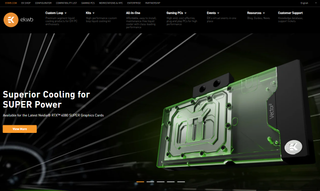Tech Industry
Explore Tech Industry
Latest about Tech Industry

US investigates China's access to RISC-V — open standard instruction set may become new site of US-China chip war
By Dallin Grimm published
U.S. lawmakers again review the risks of China's access to powerful chips through the RISC-V standard, an open-source ISA that wants to remain open to all.

Qualcomm faces Snapdragon X Elite/Plus benchmark cheating allegations
By Dallin Grimm published
SemiAccurate reports that it has independently determined that Qualcomm's freshly announced laptop chips are being marketed erroneously to consumers and OEMs.

TSMC's new Arizona chip plant allegedly plagued by worker abuses
By Dallin Grimm published
Chip manufacturer TSMC's new expansion into Phoenix has been plagued with worker rights abuses, thanks to a culture of furious overworking taken from its Taiwan plants.

Former EKWB Employees say company has racist, hostile work environment, withholds overtime pay
By Avram Piltch published
Multiple employees describe racist jokes, wage theft and unsafe conditions.

TSMC evacuated cleanroom staff during earthquake aftershocks up to magnitude 6.3 on Tuesday
By Mark Tyson published
Taiwan was rocked by a series of strong earthquakes on Monday and Tuesday but only a small number of cleanroom staff were immediately evacuated from TSMC fabs according to local news reports.

2D transistors can mimic a locust's brain to avoid collision
By Dallin Grimm published
IIT Bombay and King's College researchers worked together to create a 2D transistor in a research project studying advancements in AI machines.

Three suspected Chinese spies arrested in Germany — caught stealing sensitive tech secrets
By Mark Tyson published
Three people suspected of passing 'innovative technologies for military use' to China have been arrested in Germany

Sega recalls cat robots in Japan after users report burning smell
By Christopher Harper published
Cat robot with fur turns out to be surprisingly flammable, to itself.
Stay on the Cutting Edge
Join the experts who read Tom's Hardware for the inside track on enthusiast PC tech news — and have for over 25 years. We'll send breaking news and in-depth reviews of CPUs, GPUs, AI, maker hardware and more straight to your inbox.

